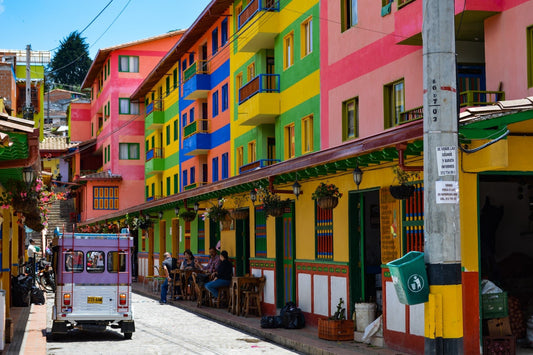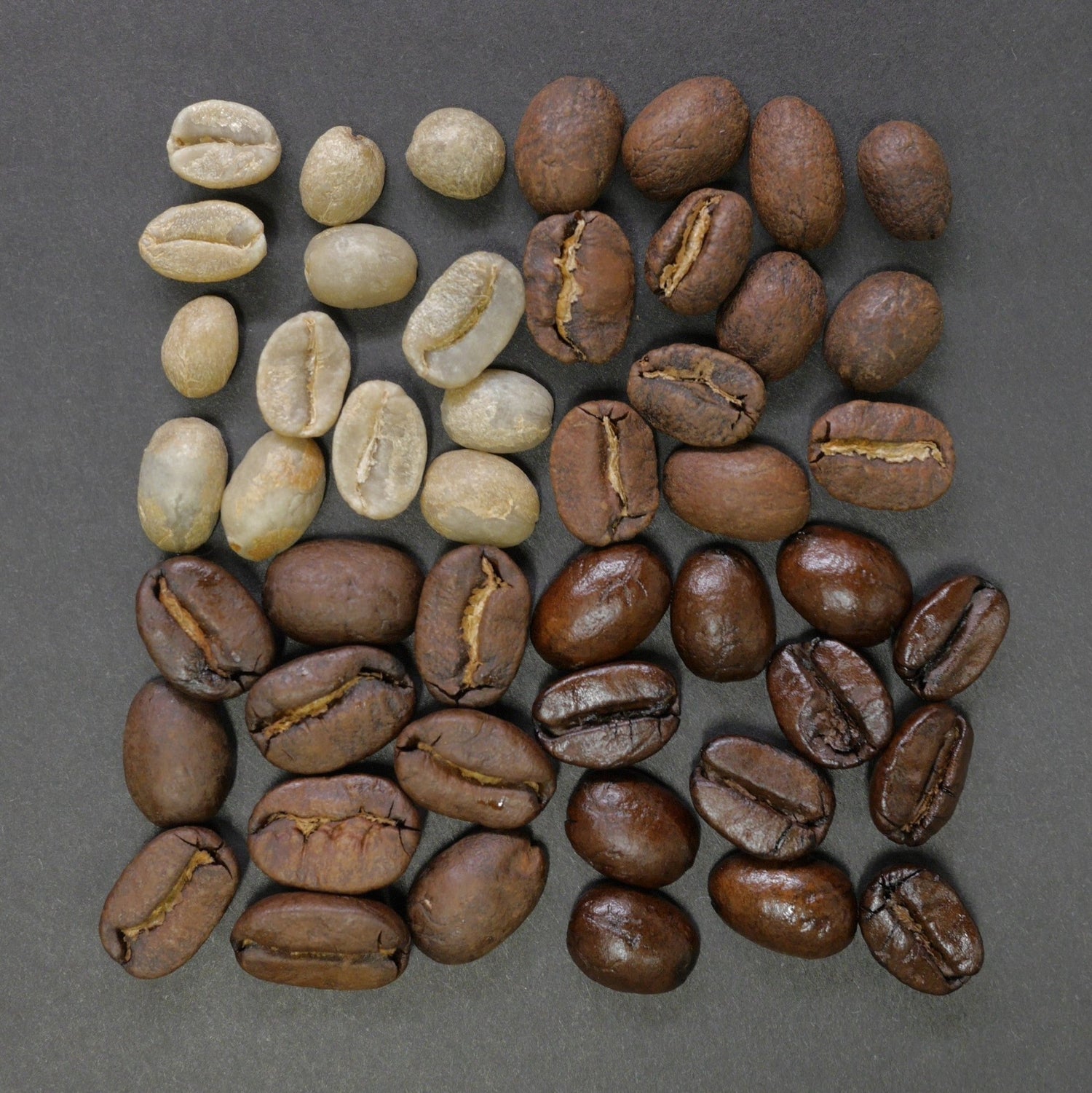Colombia is widely regarded as one of the most prestigious coffee-producing nations on the planet. The country's beans are known for their exceptional quality and rich flavor, making them popular purchases for coffee lovers all over the world. Given the level of demand and the quality of the product, we were curious about how Colombia is able to keep up with it. This led us to wonder, how many different coffee regions are there in Colombia?
The Colombian coffee belt, also known as the "Coffee Axis," is a region that is located in the Andean mountains of Colombia. This region is divided into three main regions, covering a total of 20 departments, or states: the northern region, the central region, and the southern region, extending all the way from coastal Santa Marta in the north to Nariña in the south of the country. Because each of these regions possesses its own distinct geography, climate, and conditions for growing coffee, the coffee that is produced in each of these areas possesses its own distinctive flavor profile and characteristics. Let's take a more in-depth look at these regions so that we can answer this question to the best of our abilities: Which three regions are known for their coffee?
The northern region, the central region, which can be subdivided into the north-central and south-central zones, and the southern region make up the three primary coffee producing areas in the country.

Credit: No machine-readable author provided. Golbez assumed (based on copyright claims)., CC BY-SA 3.0 <http://creativecommons.org/licenses/by-sa/3.0/>, via Wikimedia Commons
The Northern Region
Santa Marta and Santander are the primary two departments that are located in the northern part of the coffee belt in Colombia. Santa Marta grows their coffee on the foothills of the Sierra Nevada de Santa Marta, a mountain range that sandwiches a large swath of coffee growing area between itself and the sea. Here, t he growing conditions are closer to central America's lower altitudes and higher temperatures above 9 degrees latitude, which, ironically, is the complete opposite of the high elevation coffee that Colombia is known for producing. Coffee from the northern part of the region is renowned for having a lower acidity level, medium body, and clean finish because of the region's one-of-a-kind geography and climate near the Caribbean, characterized by high humidity, abundant rainfall, and mild temperatures.
As you travel south of this latitude and approach Santander, however, the region is distinguished by the rugged terrain and rising elevations of the Sierra Nevada de Santa Marta that feed into the Andes. The majority of Colombia's coffee plantations are situated at elevations ranging from 1,500 to 2,000 meters above sea level, and this is true for this area as well. You might wonder, why are coffee plantations found at high altitudes?
Coffee is grown near the equator for consistent temperatures in which coffee plants thrive, but that also puts them in humid, wet, rainforest territory. High altitudes solve this issue, placing the farms above the fogline, which dramatically increases sun exposure on the plantations and reduced humidity, boosting acidity and complexity in the final taste. 
So, what is the flavor of coffee from northern Colombia? Coffee from the northern region is frequently characterized as having nutty notes along with a mild sweetness and a medium body. As you travel further south, the flavors begin to resemble Colombia's classic, high-elevation flavors, which are characterized by increased acidity and a more well-balanced body as those found in the coffee triangle.
The Central Region and Coffee Triangle
The departments of Antioquia in the north, near the city of Medellin, Santander in the east, and Valle del Cauca in the south, as well as all regions in between, such as Caldas, the coffee capital of Colombia, Risaralda, and Quindio, make up the central Colombian coffee region, also known as the coffee triangle. This region is characterized by its gently rolling hills and verdant landscapes, with many coffee farms located at altitudes ranging from 1,200 to 1,800 meters above sea level. The area is flanked by the Andes' Oriental, or eastern, range, and the occidental, or western range, and into the foothills of the central range, which lies right in the middle, creating a sandwich of two valleys.
This is probably a good place for us to answer the question we've been wondering the entire time; what is so special about Colombian coffee? It is interesting to note that the central region has two wet seasons and two dry seasons, which is twice as much as any other region in Colombia and most countries that produce coffee. As a consequence, there are two harvests each year, which significantly increases production. Naturally, this region accounts for the lion's share of Colombia's coffee production and is well-known for the high quantity and quality of the coffee it produces.
This region is divisible into a north-central region and a south-central region, with the primary distinction between the two being the varying lengths of the growing season in each region. Although both regions have two growing seasons, the northern half of the central region, like the rest of the country, experiences its primary harvest between the months of October and December, but also a smaller secondary harvest between the months of May and June.
Although both regions have two growing seasons, the northern half of the central region, like the rest of the country, experiences its primary harvest between the months of October and December, but also a smaller secondary harvest between the months of May and June. The southern half of the central region also demonstrates this trend, but the size of its two harvests is fairly equivalent to one another. It is interesting to note that the northern central zone, despite its smaller secondary harvest, is home to nearly 10 times as many coffee fields as its counterpart.
What does the coffee from the central coffee region taste like? The coffee that is grown in this area is renowned for having a body ranging from medium to full, and well balanced acidity and sweetness. Balance, here, is key. The coffee is often described as having notes of chocolate and caramel, with a smooth and silky mouthfeel and is likely what you’re drinking when you drink regular Colombian coffee.

The Southern Region
We explored the uniqueness of the central region's double harvests, the north's wide range in climate, and now we want to know, what region of Colombia has the best coffee?
The crème de la crème of Colombian coffee is found in the southern region of the Colombian coffee belt and includes the departments of Nariño, Cauca, and Huila, which make up a "new" coffee triangle, one of particular interest to premium roast coffee lovers and roasters. Here's why:
This region is characterized by its more rugged terrain, with many coffee farms located on steep slopes and high elevations, ranging from 1,500 to 2,200 meters above sea level. The vast majority of coffee here is grown under the cover of foliage to protect against the immense exposure to sun. To clarify, long sunshine hours do not translate to hot temperatures, but instead a long, growing season in temperate climates that allow for complex flavor development. As a result of the relatively cool climate and extended growing season, the coffee in this area is renowned for having a robust body, as well as a flavor profile that is both intense and complex, with a high level of acidity. It is frequently said to have hints of bittersweet chocolate, various fruits and spices, along with a robust aroma and a bold finish. 
Colombian coffee is well-known for its balanced, but bright acidity and sweetness, with a clean, crisp finish and a medium to full body. The flavor profile changes depending on the region in Colombia where the coffee was grown, as each region produces coffee that has its own set of distinguishing qualities and nuances of flavor. The northern region is known for its moderate acidity and gentle sweetness with lots of nutty notes, the central triangle region for its well-balanced acidity and sweetness with notes of chocolate, caramel, and herbal qualities, and the southern region for its highly desirable intense and complex flavor profile with notes of dark chocolate and spice, and high citrusy acidity, desired by specialty coffee roasters.
The coffee belt of Colombia is a very diverse region that generates a wide range of flavor profiles, making it ideal for those who are passionate about coffee. Take a look at our premium specialty roast coffee from Colombia, which comes from the country's southern region.








